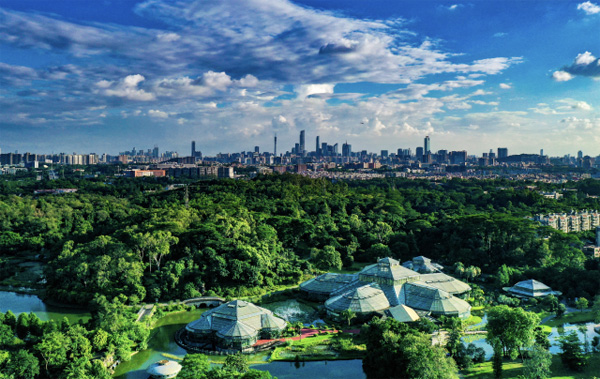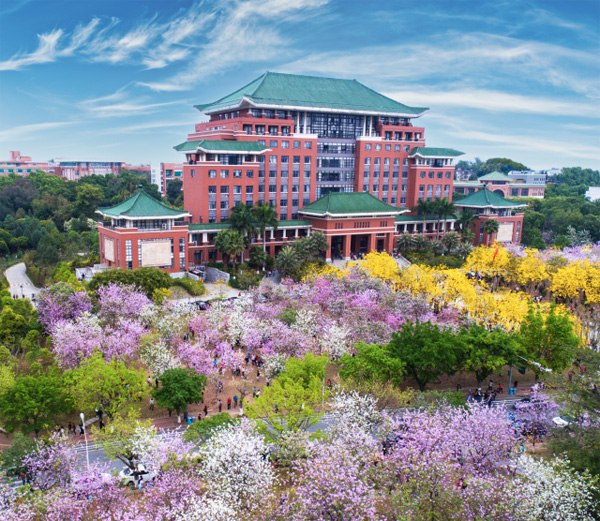Efforts made to build green Tianhe
Aug 15 marked the second National Ecology Day, and Tianhe district of Guangzhou – the capital of South China's Guangdong province – has made significant strides in promoting green development in recent years.
By now, its energy consumption per unit of GDP has decreased to 0.119 metric tons of standard coal per 10,000 yuan ($1,400) – a quarter of the national level.
The district, located south of the Jiulian Mountain Range and north of the Pearl River, boasts an ecological pattern of "one river, three mountains, and five waters". It's been implementing a plan to build a greener Tianhe and turn itself into what is called "a park in the urban area".
To date, 350 mu (23.33 hectares) of rich forests, 200 mu of landscape forests along the mountains, and 50 mu of mountain afforestation have been established in Tianhe, along with 5 kilometers of forest trails.

Tianhe district is replete with greenness. [Photo/thnet.gov.cn]
Tianhe took the lead in Guangzhou in building a four-tier park system – which includes ecological parks, urban parks, community parks, and pocket parks – to create a pleasant living environment.
So far, it has established 107 parks of all kinds and 152 km of greenways.
Focusing on achieving peak carbon and carbon neutrality goals, the district has been developing distributed solar power and other new energy storage projects and improving the quality of its prefabricated buildings.
By cooperating with the Hong Kong Quality Assurance Agency, it has formulated sustainable building management standards in line with international ones – with 86 commercial buildings in the district having been rated as smart and low-carbon ones.

Colorful blossoms festoon Tianhe with vibrancy and beauty. [Photo/thnet.gov.cn]
The central cooling center in the core area of Zhujiang New Town was built to provide intensive cooling service for 16 buildings, which can reduce carbon emissions by about 14,000 tons.
A comprehensive energy project is being planned in the Guangzhou International Financial City, which is expected to reduce carbon emissions by about 120,000 tons per year.
Moreover, Tianhe has built an air quality monitoring system covering all its 21 neighborhoods and has finished the low-carbon transformation of industrial boilers.
The district's average PM2.5 concentration has reached the required standard for eight consecutive years.
In addition, a four-tier river chief system has been built – with one city-level, one district-level, nine neighborhood-level, and 38 village-level river chiefs – to make sure the clearness of 30 rivers in the district.
